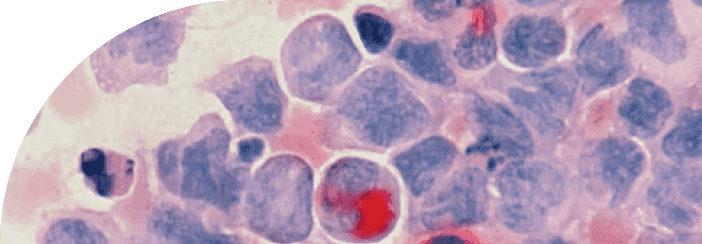
Rapamycin
The most powerful tool to stop the acceleration of aging caused by mTOR dysfunction and cellular senescence.
Aging, that inevitable march towards senescence, has puzzled and intrigued scientists for centuries. Traditionally, our understanding of aging has centered on wear and tear, with the belief that our cells and tissues break down over time due to accumulated damage. However, a fresh perspective by Dr. João Pedro de Magalhães challenges this narrative, suggesting that the very processes responsible for our growth and development might also be driving our decline after we hit our reproductive prime.
rapamycin
metformin
Aging
20 mins
By: Daniel Tawfik
Our bodies and their functions have been compared to many things in the name of understanding complex processes. In "Ageing as a software design flaw," João Pedro de Magalhães, from the University of Birmingham in the United Kingdom, compares our epigenome to computer software and aging as a short-sighted evolutionary design flaw.
In de Magalhães's perspective, DNA is akin to the hardware of a computer – stable, foundational, and containing the essential instructions. On the other hand, epigenetics is the software that governs how the DNA's blueprints, which dictate our development, are executed. Through epigenetic modifications, a single cell evolves, differentiates into many cell types, and eventually culminates into the complexity of a human being with many tissue types.
Most theories of aging focus on the hardware-centric view of aging. In this view, damage on the DNA level propagates to the decline of cellular function. This compounds as we are unable to fix these errors. The conventional model of aging leans on the idea of repair and protective mechanisms becoming less efficient as we age. However, Dr. de Magalhães posits a different theory: what if it's not merely about our bodies' ability (or lack thereof) to repair damage? What if the root of aging lies in the genetic instructions that guide our development? Are these genetic instructions over-optimized for our development into a reproductive age, which then have negative consequences beyond that point?
Dr. de Magalhães's hypothesis suggests that the same genetic programs activated during our growth and development could be playing a role in our eventual degeneration. That is, while these processes are essential for our early life growth, development, and maturation, they might become detrimental as we advance in age.
We see this play out in many age-related pathologies. Consider the case of presbyopia. Presbyopia is a common age-related vision disorder that begins to appear typically around the age of 40. It's characterized by a gradual loss of the eye's ability to focus on close objects. This loss of focusing ability is due to a decrease in the elasticity of the lens of the eye, which makes it harder for the eye to adjust its focus to close-up objects, something that is naturally and easily done in younger years. Presbyopia is thought to arise from the continuous growth of the eye's lens, leading to a loss of elasticity. But what prompts the lens to keep growing, even when it's detrimental? Is it the same developmental programming that helped us reach a prime reproductive age that becomes maladaptive as we get older?
Then there are other changes, such as shifts in our cell composition or hormonal changes that naturally occur as we transition from youth to adulthood. While these changes are vital in earlier life phases, they might be setting the stage for degeneration in our later years. What we are painting a picture of is a maladaptive development-centric view of aging.
This developmental-centric view of aging paints a picture where intrinsic flaws in our "developmental software" drive what we perceive as aging. In essence, this perspective shifts the focus from external factors and inevitable wear and tear to an internal script, pre-written in our DNA, that governs both our growth and our decline. In this framework, instead of focusing solely on repairing accumulated damage or enhancing protective mechanisms, we would need to address these "in-built" genetic instructions.
How we develop, adapt, and age isn't just in our DNA sequence itself – it's also about how this genetic information is interpreted. Enter the world of epigenetics. At its core, epigenetics is about understanding how our genes are switched 'on' or 'off.'
While our DNA sequence remains largely unaltered throughout our lives, the way certain genes are expressed can change in response to different stimuli, experiences, or environmental factors. This is akin to having a vast library of books (our genes) where some books are prominently displayed and frequently read, while others are kept locked away and are rarely accessed. The system that determines which books are available or hidden is what epigenetic modifications oversee.
These epigenetic changes don't alter the text of the DNA (or the content of the books in our analogy) but rather influence how, when, and if they are read. Methyl groups are fundamental to understanding the architecture of the epigenome. When a methyl group attaches itself to certain locations on our DNA, it can effectively silence or reduce the activity of a gene, much like placing a bookmark that tells the cell: "Don't read this section now."
When we analyze the epigenome across species, we see recurring methylation patterns and changes as we age that are of interest to researchers. Scientists, such as Dr. Steve Horvath from the Horvath Lab at UCLA, have ventured deep into this realm, uncovering the intricacies of epigenetic modifications.
Horvath is particularly renowned for developing a way to measure these methyl tags across the genome and draw meaningful conclusions about an individual's age. This measure has become famously known as the 'Horvath Clock.' By meticulously mapping epigenetic modifications, Horvath found a striking correlation between these modifications and an individual's chronological age.
The clock operates based on around 400 specific locations, or 'methylation sites,' on the human genome. By assessing the patterns of methylation at these sites, Horvath and his team can predict a person's age with astonishing accuracy.
While age is typically just a chronological measure, the Horvath Clock delves deeper, offering insights into 'biological' age. This distinction is crucial: two individuals might both be 40 years old chronologically, but one could have the epigenetic age of a 35-year-old, while the other mirrors a 50-year-old.
This information can be pivotal. Knowing whether you are epigenetically younger or older than your actual age provides valuable data about your health. For example, individuals whose epigenetic age outpaces their chronological age might be at a higher risk for certain age-related conditions or diseases.
There are other clocks out there that measure similar things, but they usually include a different profile of methylation sites. In fact, recently, the Horvath group published a new universal methylation clock that is touted to universally apply to all mammals. Naturally, if something in biology is this robust, we must deeply study it and figure out applications other than the world's greatest "guess my age" program.
What is the significance of these methylation sites beyond what they tell us about our biological age? Does the predictability of methylation patterns and their changes as we age give us any insights into what is actually driving aging?
One of the hallmark features of aging is the alteration in DNA methylation patterns across the genome. On a broader scale, there's a trend of genome-wide hypomethylation—a general reduction in methylation marks. However, at specific regulatory regions called promoters, there is an increase in methylation, termed hypermethylation. These changes aren't haphazard. According to de Magalhães, the patterns suggest a systematic or programmatic process, hinting at a deeper biological mechanism at play rather than mere random events.
One of the most fascinating revelations about these epigenetic clocks is their onset. They begin ticking almost immediately after conception, remaining remarkably precise throughout developmental phases, all the way to old age. This observation steers the conversation toward an inescapable inference: there seems to be a connection between developmental programs and aging.
De Magalhães proposed that while external factors might modulate the rate of aging, the very core of the aging process, as seen in the predictable changes in methylation patterns, is inextricably linked to the progression of time. However, instead of viewing aging as a distinct phase of decline, it appears more as a continuation of developmental processes set into motion from the earliest stages of life.
One of the compelling arguments against aging being a mere random occurrence is its predictability. Instead of being arbitrary, the signs of aging manifest in gradual, foreseeable patterns. While there are anomalies, such as tumors or cerebral cavernous malformations, the majority of aging signs, like the thinning of bones, greying of hair, or decreasing muscle mass, follow a set trajectory.
Consider a simple observation: when men age, the greying of their beard hairs often happens symmetrically. Likewise, epigenetic clocks are surprisingly accurate throughout the entire lifespan, which again does not fit the idea that aging is a product of entropy breaking down the body. Quite the opposite, the strong, deterministic patterns we see in aging suggest an underlying driver. Such orderliness seems at odds with the notion that aging is simply our bodies yielding to entropy.
Evidence supporting this idea comes from the animal kingdom. Look at mice and humans: genetically and biochemically, we're remarkably similar. Yet, in optimal conditions, a mouse's lifespan is a mere fraction of ours. Why? According to the hypothesis, the developmental software in a mouse operates at a pace 20-30 times swifter than in humans. As a result, they mature and subsequently age faster.
It's not just about mice and humans. Across the spectrum of mammals, there are striking differences in aging, even among close relatives. Consider primates: while humans can live into their 70s and beyond, rhesus monkeys are considered elderly by 30, and marmosets show signs of old age at just 8.
However, when scientists look closely, they spot a trend: the age at which an animal reaches sexual maturity is an excellent predictor of its lifespan. This holds true regardless of the creature's size or metabolic rate. For example, there's a consistent correlation between the age at which animals typically reproduce and how long they live thereafter.
But what's driving this correlation? Dr. de Magalhães suggests it might boil down to "design flaws" in the developmental software. If the time it takes for an organism to develop influences its aging process, it would elucidate the vast disparities in aging across species.
The idea proposed by de Magalhães is that our aging isn't so much about random molecular breakdowns but rather about pre-coded developmental processes. These processes were honed to get us to a prime reproductive age and may begin to have detrimental effects post-reproduction. This concept draws from the idea of antagonistic pleiotropy: genes that confer benefits in youth (optimizing reproduction, for instance) might have harmful effects in our later years.
To clarify, it's not that evolution designed our bodies with an intentional self-destruct button post-reproduction. Instead, after our reproductive prime, the protective hand of natural selection becomes less potent, exposing the inherent design flaws of our developmental "software." We see this dynamic in cancer as we age.
Cancer is paradoxical because it is both and is not a disease of aging. Age is a huge risk factor for many (if not all) cancers, but that does not change the fact that it is primarily caused by the accumulation of damage, both at the gene level and the physical level. Further, cancer is not as gradual or inevitable as other diseases of aging. We often think about growing old while our functions slowly deteriorate, but cancer does not behave this way. It is fast and catastrophic.
So how does this developmental program influence our software to protect against cancer? Considering the rate at which our cells divide and expand during development, we must have anti-cancer protections that don't seem to endure into late adulthood.
One such early cancer defense is increased expression of telomerases. Telomerases help protect our genes by adding extra material to their ends, like a protective cap. If our genes do not have this protection, the double helix structure can fray and will be more exposed to damage, increasing the risk of cancer. An increase in these telomerases indicates an increased effort to prevent cancer. While telomerase is active in the early phases of development, its expression diminishes in most adult tissues.
These developmental safeguards might come at a cost. The same mechanisms that suppress tumors during our youth could compromise our regenerative or repair capabilities in later life. In simple terms, our body's developmental "software" is programmed to inhibit cancer-prone activities, but the prolonged effect of this programming might contribute to the aging process.
Our software is designed to abrogate cancer in the early stages of development but not when we are older, presumably because we have already done our evolutionary duty. So how does aging fit, or not fit, in the story of software?
Thinking about our epigenome as a linear process of adding and removing modifications does simplify it a little bit, and when you think about our development from embryos to adults, the patterns and sequences become very clear.
In this way, de Magalhães speculates that aging is a repercussion of our epigenome, only getting us to our "prime." To explain another way, evolution and the theory of natural selection prioritize surviving until reproduction and, if there is some advantage to it, raising offspring. Anything past our prime, our epigenetic software programs must improvise, and the same old bag of tricks to propel survival and reproduction don't really benefit aging gracefully.
We are not currently able to decode the exact cause and effect of individual methylation sites, but the linearity of the Horvath clock and the linearity of aging point to slow but inevitable processes that are triggered by simply remaining alive. Indeed, de Magalhães proposes many examples of gradual aging expectations that support this idea.
Once we pass our prime, our bodies need to be able to slow down. We do not need to regulate ourselves as if we will try and reproduce one more time before our death. What if, instead, we were able to find ways to regulate our bodies differently and age gracefully? This is an important question and is phrased from a unique point of view.
The treatments and knowledge we have right now are largely reactive in nature. Understanding and intervening before it is necessary will signal a true anti-aging treatment. In the aging field, we often describe contemporary healthcare as a "whack-a-mole" game, attempting to deal with things as they appear, but eventually, the number of issues to deal with becomes fatal. Attacking aging from this perspective can better inform the needs and feasibilities of true anti-aging treatments.
If we view aging through the lens of a developmental software flaw—where the programs that promote growth to a reproductive age become detrimental as we age—then interventions that slow down the developmental 'growth' programs should decelerate this design flaw. Two of interest would be targeting the Growth Hormone/Insulin-like Growth Factor 1 and mTOR pathways.
The Growth Hormone/IGF1 pathway is critical to cellular and organismal growth and development when we are young. There is a tremendous amount of growth that occurs during puberty, for example, and these pathways are integral to that process. So in one context, these hormones are beneficial to development into reproductive age. However, as we age, the overactivity of these pathways drives the growth of dysfunctional cells and unhealthy tissue.
We see this, for example, in bodybuilders who take exogenous IGF-1 to accelerate muscle growth. We see that bodybuilders have a higher prevalence of pathologies as they get older. In the context of the de Magalhães perspective on developmental programming they are accelerating the degenerative aspect of developmental program that occurs after reproductive age.
On the other hand, there is significant data that when we inhibit these pathways, there are fewer adverse health outcomes as we age. When we look at data on patients taking metformin or partake in caloric restriction, for example, we see fewer occurrences of age-related diseases. One of the primary ways that metformin confers this benefit is by reducing IGF1 levels.
Across the board—from tiny nematodes to mice—reducing food intake without causing malnutrition has consistently shown potential in extending life. By limiting caloric intake, organisms seem to age slower, resisting diseases that typically accompany old age. This benefit is partially delivered through its reductions in GH/IGF1 pathway.
According to de Magalhães, this is an example of decelerating the developmental program—by slowing down the GH/IGF1 pathway's progression—there's a corresponding slowdown in aging, and as a result, we see fewer age-related degenerative pathologies.
When discussing interventions that potentially influence aging in mammals, rapamycin stands out as one of the most promising interventions. One of rapamycin's defining characteristics in the context of aging is its ability to decelerate growth. The compound specifically targets mTOR, a crucial component that regulates cellular metabolism and growth. From a developmental perspective, mTOR activity propels cell growth and organizational development.
As we get older, however, we see a chronic elevation in mTOR activity, which drives cellular dysfunction and the growth of unhealthy tissue. When mTOR is overactive, cell growth becomes excessive, and cell output becomes toxic to the tissue. The defining characteristic of these dysfunctional cells is that they grow excessively large, over-excrete toxic proteins, chemicals, and inflammatory molecules and cause excessive tissue growth by releasing excessive growth factors and mitogens. mTOR overactivity would represent an accelerant of our developmental programming driving our degenerative state.
When rapamycin is introduced as an intervention, we see some resetting of these developmental programs. In every species that's been studied to date – yeast, worms, flies, mice – when they are given rapamycin, healthspan, and lifespan are extended. No other therapeutic has that degree of validation. Studies on human cells reveal that rapamycin treatment can slow down epigenetic aging, the changes to the epigenome over time that influence aging.
Intriguingly, some recent studies on mice and invertebrates have demonstrated that early administration of rapamycin can both suppress growth and enhance lifespan later on. This connection supports the notion that the pace at which organisms develop might be intrinsically linked to how long they live, emphasizing that aging might, in fact, be an extension of developmental processes.
While the early life effects of rapamycin are compelling, it's also essential to note that both rapamycin treatment and dietary restriction in later stages of life have been shown to extend lifespan in mice. This finding aligns with the idea that aging is driven by developmental software programs that persist throughout life.
The leading interventions that influence aging, such as rapamycin, possibly operate by slowing down this "developmental software program ." The intertwined relationship between growth, development, and aging offers a rich tapestry of opportunities for further research, potentially opening the door to strategies that enhance health and longevity.
Piecing it all together, it becomes evident that the processes governing development and growth are intertwined with those that determine aging. The interventions that slow down our "developmental software program" — whether it's through pathways like GH/IGF1 or practices like dietary restriction — appear to concurrently delay the aging process.
Every individual starts as a single cell, which necessitates a "software" reset to begin life's journey anew. This biological resetting is evident during the moments following fertilization. In the zygote and the initial stages of embryogenesis, there is a significant reorganization of the genome's chromatin structure, leading to epigenetic reprogramming that paves the way for the cell's potential to become any type of cell, termed totipotency or pluripotency.
This extensive epigenetic transformation during early development involves erasing most previous methylation patterns and then re-establishing them. Scientists have long perceived these transitions as a form of 'resetting'. Adding weight to this idea, recent studies have highlighted a reduction in epigenetic aging indicators during embryonic development's initial phases.
Once reset, the developmental program orchestrates life's progression with remarkable accuracy. This precise process results in the formation of diverse tissues and cells. Throughout this journey, the epigenetic landscape of cells undergoes changes. Contrary to notions of randomness, these shifts mainly follow a predetermined pattern dictated by DNA's information, although they're also influenced by environmental factors and other biological variations.
As organisms mature and progress through life, the same developmental software keeps running, enacting epigenetic modifications that delineate the roles and attributes of countless cells within a plethora of tissues. To envision it simply: as this biological software continues to operate, the aging clock within our cells keeps ticking. It's noteworthy that even during embryonic development, there's an observed increase in epigenetic age. This phenomenon further bolsters the idea that aging intricately ties into development.
In the realm of cell aging, the concept of reprogramming takes center stage. Reprogramming an old cell equates to restarting its innate software, signifying a comprehensive reset of its epigenetic identity.
Enter Shinya Yamanaka, who won the Nobel Prize for discovering the molecules needed to turn back the epigenetic clock. In the annals of recent scientific advancements, few discoveries have been as groundbreaking as those made by Shinya Yamanaka. The Japanese researcher made waves in the scientific community with his revelation regarding the ability to revert mature cells back to a stem cell-like state.
Yamanaka found that by introducing four specific molecules into a mature cell, it was possible to reverse the epigenetic changes, effectively turning back the clock on cellular identity. These four molecules – Oct3/4, Sox2, Klf4, and c-Myc–have come to be known as the Yamanaka factors.
The four molecules have since been termed the Yamanaka factors, and have been incredibly influential to cutting-edge science. Their application is broader than we will discuss today, but I would be remiss not to mention induced pluripotent stem cells or IPSCs.
When the Yamanaka factors are applied to mature cells, they revert to a stem cell state–a pluripotent state, meaning they have the ability to differentiate into almost any cell type in the body. This has vast implications for medical research. In theory, cells from an individual can be reverted to this pluripotent state and then differentiated into another cell type–creating patient-specific cells for research or potential treatments.
These factors so effectively remove these developmental markers that fully differentiated cells will revert back into their stem cell state, allowing researchers to re-differentiate them into another cell type. This incredible application has revolutionized cell culturing models and methods but has some glaring stipulations for direct treatments in humans.
Initial studies showed that treatments with Yamanaka factors caused cancer risk and incidence to skyrocket. Other studies have modified the treatments into a more cyclic schedule to mitigate this, and some companies are garnering press and funding to explore options for anti-aging treatments.
Treatments with Yamanaka factors are like a factory reset for the epigenetic software, stripping all the modifications from the DNA and producing a negligible reading on the Horvath clock.
Even though the epigenome is still a huge mystery, the principles and trends it produces are being uncovered. We know that these simple modifications will point to (more or less) our chronological age and that their existence drives our development. Some biologists greatly simplify this fact by saying, "DNA doesn't matter, it's all in expression".
Oversimplifications aside, there is some truth to this. We share a significant amount of DNA with every living organism, including plants and insects. Hive insects like ants and bees all share DNA and come from similar origins, but they still appear in diverse and specialized forms like workers and soldiers. How our genes are expressed is greatly due to epigenetics and the inherent developmental programs that make us. A greater understanding of these programs will help us tease apart how these slow, inevitable aspects of aging arise and hopefully aid the design of true anti-aging drugs instead of playing symptomatic whack-a-mole.
Latest Longevity Research Straight to your Inbox
Sign up for The Longevity Blueprint, a weekly newsletter from Healthspan analyzing the latest longevity research.
Sign up for The Longevity Blueprint, a weekly newsletter from Healthspan analyzing the latest longevity research.





